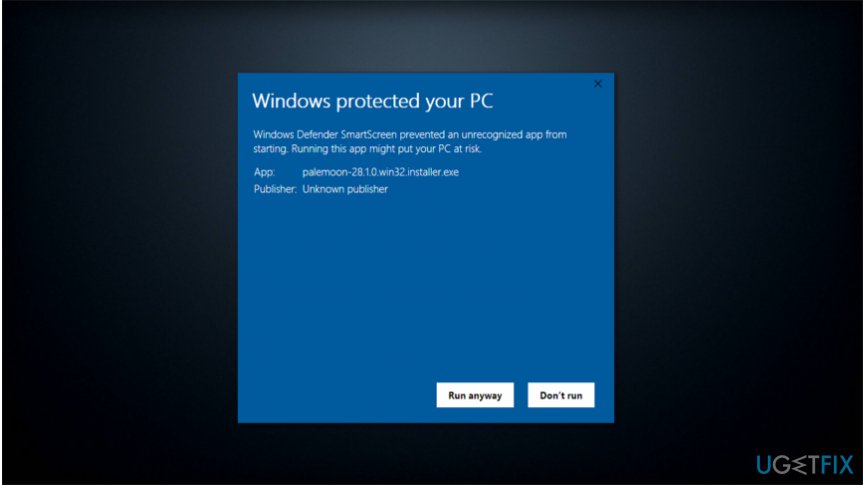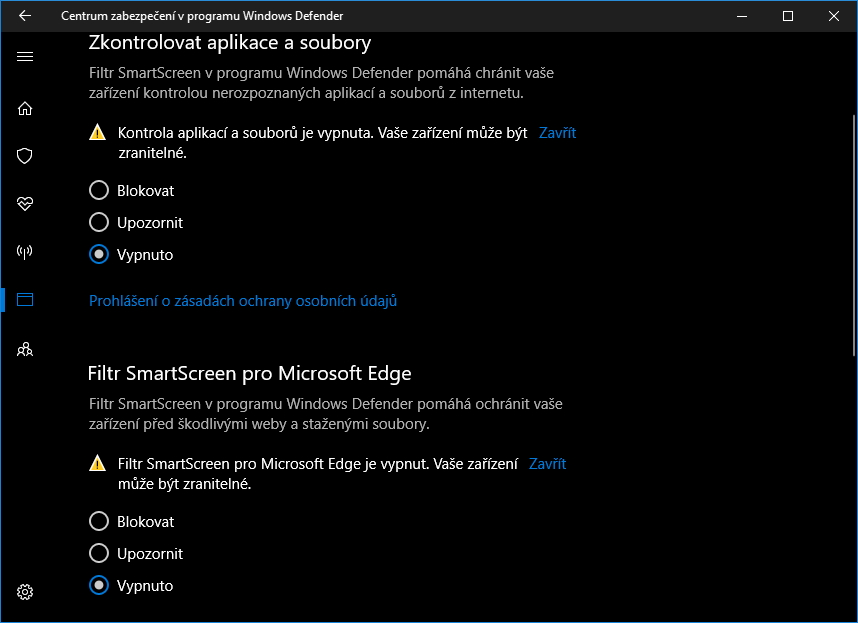

- #Smartscreen exe update
- #Smartscreen exe Patch
- #Smartscreen exe windows 10
- #Smartscreen exe pro
- #Smartscreen exe zip
We then searched for the cause, and found. JS file with various malformed signatures until we reached the flawed execution path that bypassed the SmartScreen warning.
#Smartscreen exe Patch
This information was sufficient for us to start our patch development process. This, for some peculiar reason, led to Windows trusting them - and letting malicious executables execute without a warning.Īnd so a new 0day - already exploited in the wild - was revealed. In fact, they were malformed such that Windows could not even properly parse them. Will then noticed that these signatures were not valid at all and should not have been trusted by Windows. Patrick remarked that Authenticode signatures on extracted malicious files must have been causing this behavior because with signatures removed, the warning would (correctly) appear. So why did these malicious Magniber files not trigger the SmartScreen warning? When deciding whether to trust the file or not, the Mark of the Web plays an important role: files with this mark are considered unconditionally untrusted as they originated from an untrusted source. The user needs to click "More Info" and then press "Run" if they really want to open the file. SmartScreen determined that this file could be harmful and warned the user.
#Smartscreen exe windows 10
Remember that on Windows 10 and Windows 11, opening any potentially harmful file triggers a SmartScreen inspection of said file, whereby SmartScreen determines if the file is clear to get launched or the user should be warned about it (see image below).
#Smartscreen exe zip
Patrick responded that malicious files extracted from the attacker's ZIP files did have the Mark of the Web but still executed without a security warning. Will asked Patrick about the ZIP files used in the malware campaign to see if they were exploiting the same vulnerability or employing some other trick to bypass the "Mark of the Web". Patrick works at HP Wolf Security where they analyzed the Magniber Ransomware and wrote a detailed analysis of its working. On the very same day we issued these micropatches, Will Dormann - who researched said vulnerability - replied to a tweet by another security researcher, Patrick Schläpfer. That vulnerability, affecting all supported and many legacy Windows versions, still has no official patch from Microsoft so our (free!) patches are the only actual patches in existence as of this writing. Nine days ago we issued micropatches for a vulnerability that allows attackers to bypass the warning Windows normally present to users when they try to open a document or executable obtained from an untrusted source (Internet, email, USB key, network drive). As far as this bypass goes, our patches for it were available 137 days before the original vendor patch 0patch users on end-of-support Windows systems were protected against this since last October. We thank Benoît Sevens of Google TAG for sharing their analysis with the community. As our original patch from October is not affected by this bypass (the user still gets a security warning), we don't need to create an additional patch for CVE-2023-24880. Their patch is in the same function as our own patch from last October, and like our patch, makes sure the user is shown the typical Mark-of-the-Web warning for files with a malformed signature but while we decided to show users a typical Mark-of-the-Web security warning for files with a malformed signature, Microsoft decided to silently error out by doing exactly what we considered doing - but decided not to as it would confuse users (see below). Microsoft assigned this bypass a separate CVE ID CVE-2023-24880 and patched it with March 2023 updates.
#Smartscreen exe update
Update : The patch Microsoft created for CVE-2022-44698 in December turned out to be flawed and its bypass was found to be exploited in a Magniber ransomware campaign to trick users into launching a malicious MSI file without any security warnings.
#Smartscreen exe pro
Our patches for this issue were freely available 46 days before the original vendor patch, and now require Pro or Enterprise license.

Update : Microsoft patched this issue with December 2022 Windows Updates and assigned it CVE-2022-44698.


 0 kommentar(er)
0 kommentar(er)
